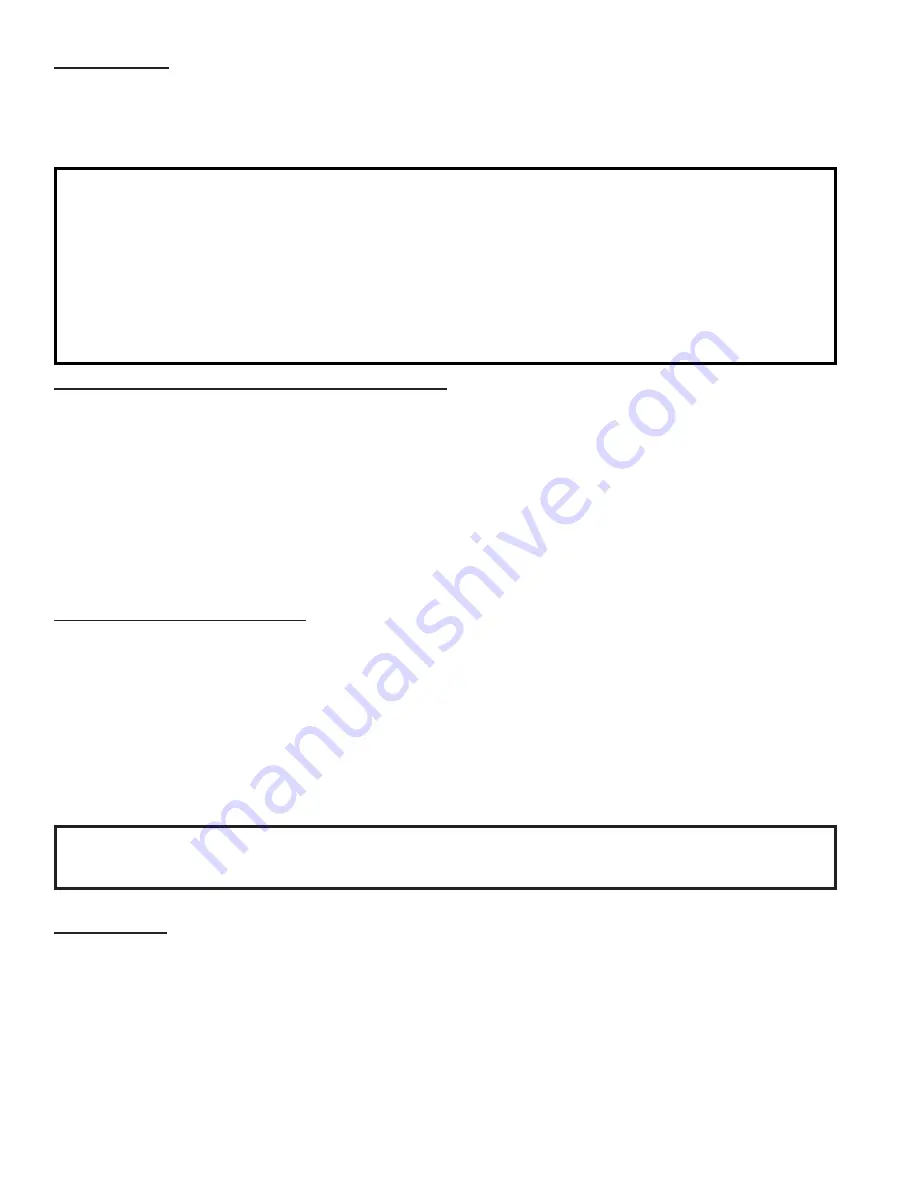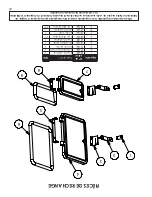
18
VISIBLE SMOKE
The amount of visible smoke being produced can be an effective method of determining how efficiently
the combustion process is taking place at the given settings. Visible smoke consist of unburned fuel and
moisture leaving your stove. Learn to adjust the air settings of your specific unit to produce the smallest
amount of visible smoke. Wood that has not been seasoned properly and has a high wood moisture
content will produce excess visible smoke and burn poorly.
CREOSOTE FORMATION AND NEED FOR REMOVAL
When wood is burned slowly, it produces tar and other organic vapors, which combine with expelled
moisture to form creosote. The creosote vapors condense in the relatively cool chimney flue of a slow-
burning fire. As a result, creosote residue accumulates on the flue lining. When ignited this creosote makes
an extremely hot fire. The chimney connector and chimney should be inspected at least once every
two months during the heating season to determine if a creosote build-up has occurred. If creosote has
accumulated (3mm or more), it should be removed to reduce the risk of a chimney fire. We strongly
recommend that you install a magnetic thermometer on your smoke exhaust pipe, approximately 18”
above the stove. This thermometer will indicate the temperature of your gas exhaust fumes within the
smoke exhaust system. The ideal temperature for these gases is somewhere between 275°F and 500°F.
Below these temperatures, the build-up of creosote is promoted. Above 500 degrees, heat is wasted since
a too large quantity is lost into the atmosphere.
TO PREVENT CREOSOTE BUILD UP
•
Always burn dry wood. This allows clean burns and higher chimney temperatures, therefore less
creosote deposit.
•
Leave the air control full open for about 5 min. every time you reload the stove to bring it back to
proper operating temperatures. The secondary combustion can only take place if the firebox is hot
enough.
•
Always check for creosote deposit once every two months and have your chimney cleaned at least
once a year.
If a chimney or creosote fire occurs, close all dampers immediately. Wait for the fire to go out and the
heater to cool, then inspect the chimney for damage. If no damage results, perform a chimney cleaning to
ensure there is no more creosote deposits remaining in the chimney.
ASH DISPOSAL
Whenever ashes get 3 to 4 inches deep in your firebox or ash pan, and when the fire has burned down
and cooled, remove excess ashes. Leave an ash bed approximately 1 inch deep on the firebox bottom to
help maintain a hot charcoal bed.
Ashes should be placed in a metal container with a tight-fitting lid. The closed container of ashes should
be placed on a noncombustible floor or on the ground, away from all combustible materials, pending final
disposal. The ashes should be retained in the closed container until all cinders have thoroughly cooled.
WARNINGS
• NEVER OVER FIRE YOUR STOVE. IF ANY PART OF THE STOVE STARTS TO GLOW RED, OVER FIRING IS
HAPPENING. READJUST THE AIR INTAKE CONTROL AT A LOWER SETTING.
• THE INSTALLATION OF A LOG CRADLE or GRATES IS NOT RECOMMENDED IN YOUR WOOD STOVE. BUILD
FIRE DIRECTLY ON FIREBRICK.
• NEVER PUT WOOD ABOVE THE FIREBRICK LINING OF THE FIREBOX.
•
ATTEMPTS TO ACHIEVE HEAT OUTPUT RATES THAT EXCEED HEATER DESIGN SPECIFICATIONS CAN RESULT
IN PERMANENT DAMAGE TO THE HEATER.
ATTENTION:
This wood heater needs periodic inspection and repair for proper operation. It is against federal
regulations to operate this wood heater in a manner inconsistent with operating instructions in this manual.
















































